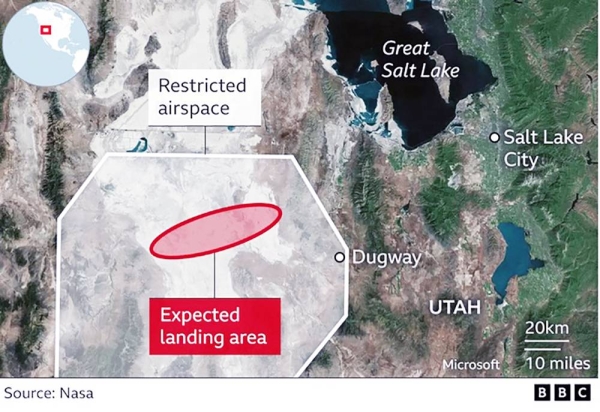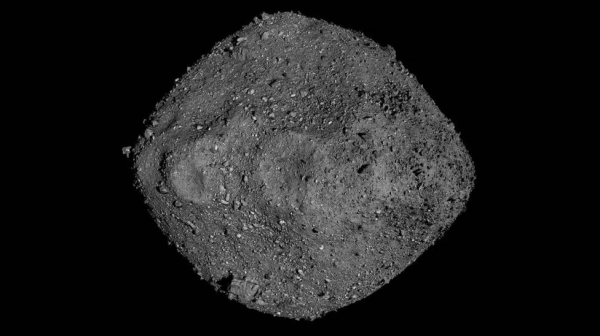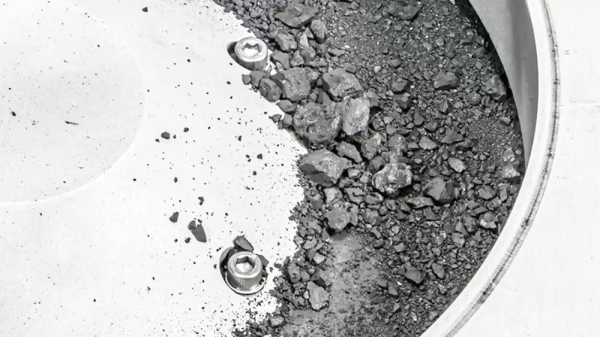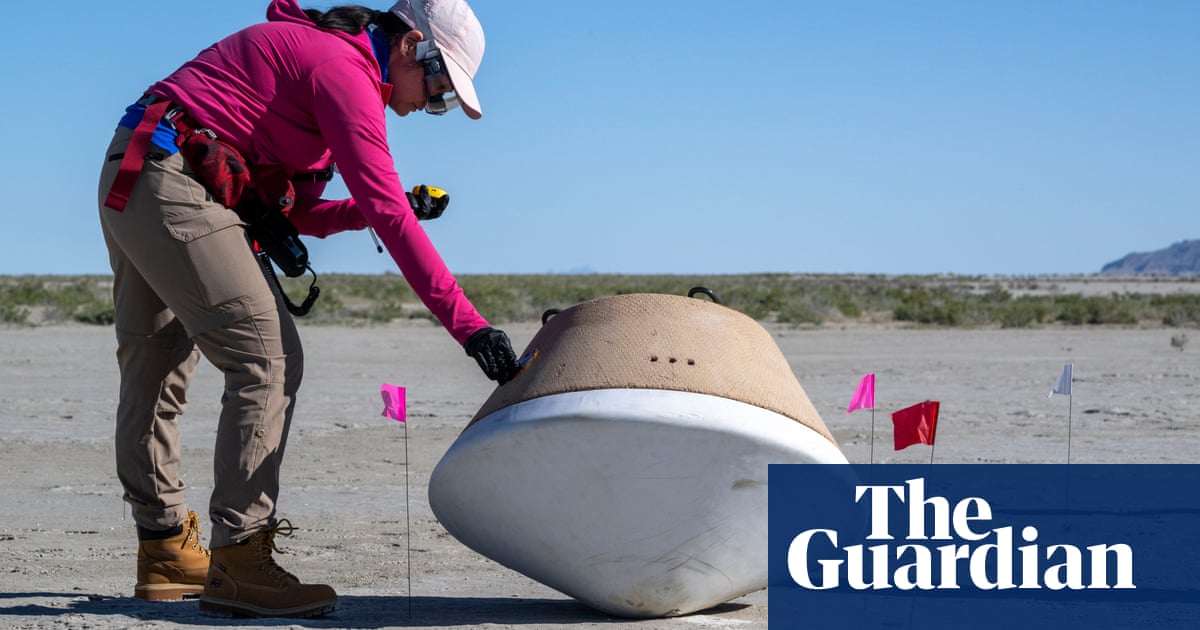
A Nasa spacecraft has successfully landed on an asteroid, dodging boulders the size of buildings, in order to collect a handful of cosmic rubble for analysis back on Earth.
The space agency team behind the Osiris-Rex project said preliminary data showed the sample collection went as planned and that the spacecraft had lifted off the surface of asteroid Bennu.
“I can’t believe we actually pulled this off,” said lead scientist Dante Lauretta of the University of Arizona. “The spacecraft did everything it was supposed to do.”
Nasa administrator Jim Bridenstine offered his congratulations, saying: “We are on the way to returning the largest sample brought home from space since Apollo. If all goes well, this sample will be studied by scientists for generations to come.”
The Osiris-Rex spacecraft sent back confirmation of its brief contact with asteroid Bennu more than 200m miles (322m km) away, drawing cheers from the mission team. But it could be a week before scientists know how much, if anything, was grabbed and whether another try will be needed. If successful, Osiris-Rex will return the samples in 2023.
The US mission follows one run by Japan called Hayabusa2, which is due to return to Earth in December bearing samples collected from the 4.5bn-year-old asteroid Ryugu. When it lands in the Australian desert, it will be the first ever sub-surface asteroid sample to return to Earth.
On Bennu, the Osiris-Rex spacecraft took four-and-a-half hours to make its way down from its tight orbit to the surface, following commands sent well in advance by ground controllers near Denver.
As the asteroid is just 1,670 feet (510 meters) across, Bennu’s gravity was too low for Osiris-Rex to land. As a result, the spacecraft had to reach out with its 11-foot (3.4-meter) robot arm and attempt to grab at least 2 ounces (60 grams) of Bennu.
The University of Arizona’s Heather Enos, deputy scientist for the mission, described it as “kissing the surface with a short touch-and-go measured in just seconds”.
The coronavirus pandemic had resulted in a two-month delay. Tuesday’s operation was considered the most harrowing part of the mission, which began with a launch from Cape Canaveral back in 2016.
Osiris-Rex, a van-size spacecraft, aimed for a spot equivalent to a few parking spaces on Earth in the middle of the asteroid’s Nightingale Crater. After nearly two years orbiting Bennu, the spacecraft found this location to have the biggest patch of particles small enough to be swallowed up.
After determining that the coast was clear, Osiris-Rex closed in the final few yards for the sampling. The spacecraft was programmed to shoot out pressurized nitrogen gas to stir up the surface, then suck up any loose pebbles or dust.
Scientists want between 2 ounces (60g) and 4 pounds (2kg) of Bennu’s black, crumbly, carbon-rich material thought to contain the building blocks of our solar system.
Nasa’s science mission chief, Thomas Zurbuchen, likened Bennu to the Rosetta Stone, “something that’s out there and tells the history of our entire Earth, of the solar system, during the last billions of years.”
Another benefit: Bennu has a slight chance of smacking Earth late in the next century, although not as a show-stopping life-ender. The more scientists know about the paths and properties of potentially hazardous space rocks like this one, the better. Osiris-Rex can make up to three touch-and-go maneuvers in case it comes up short. Regardless of how many tries it takes, the samples won’t return to Earth until 2023 to close out the $800m-plus quest. The sample capsule will parachute into the Utah desert.
“That will be another big day for us. But this is absolutely the major event of the mission right now,” Nasa scientist Lucy Lim said.
Nasa, meanwhile, plans to launch three more asteroid missions in the next two years, all one-way trips.












